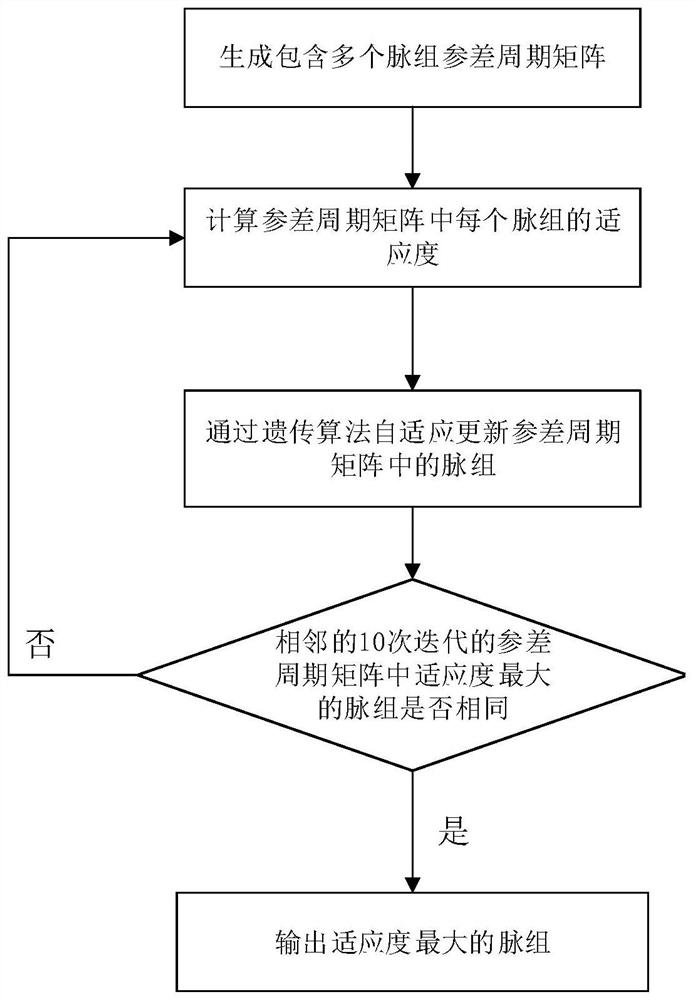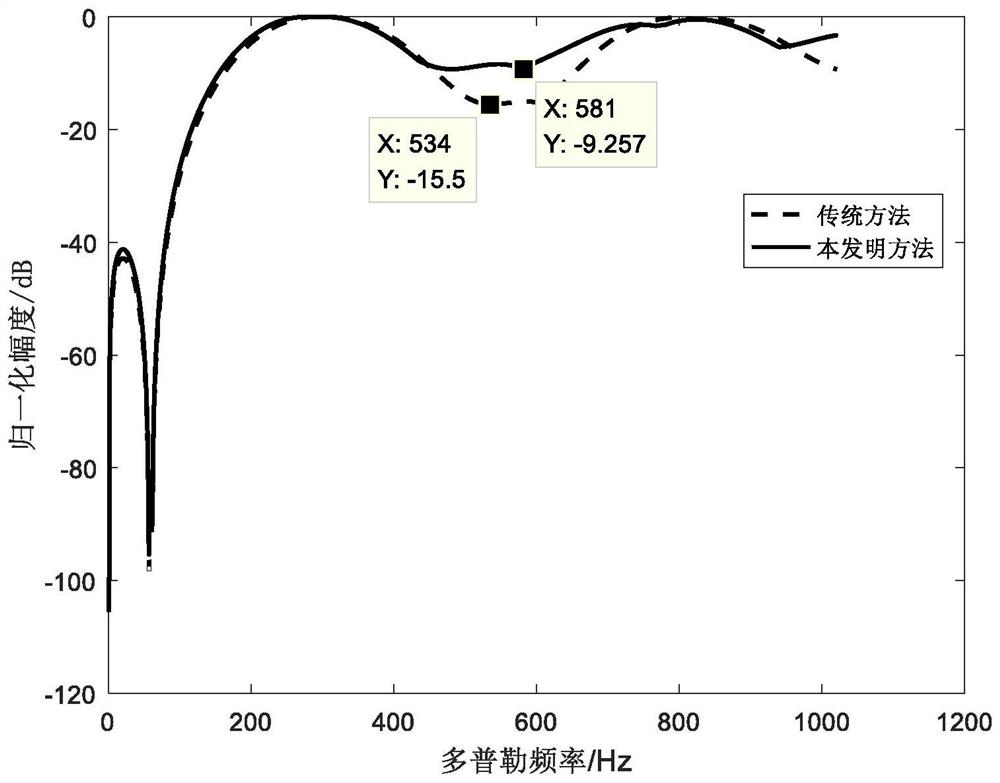Method for optimizing frequency response of multiple groups of staggered combination MTI filters based on genetic algorithm
A technology of frequency response and genetic algorithm, which is applied in the field of optimizing the frequency response of multiple groups of staggered moving target display filters based on genetic algorithms, can solve the problem that the first zero point depth of MTI filter frequency response is too deep, etc., and achieve improved target detection performance, optimized frequency response, and reduced loss
- Summary
- Abstract
- Description
- Claims
- Application Information
AI Technical Summary
Problems solved by technology
Method used
Image
Examples
Embodiment Construction
[0023] Attached to the following figure 1 The present invention is further described in detail with examples.
[0024] Step 1, generate a staggered periodic matrix:
[0025] A staggered periodic matrix with Q rows and W columns is randomly generated. Each row in the matrix represents a pulse group, and a pulse group can be divided into multiple staggered groups. The number of staggered groups is determined by the design requirements of the radar system. The group contains multiple radar transmit pulses, and the number of pulses is also determined by the requirements of the radar system design. Each element in the matrix represents a range [T 1 ,T 2 ] of a radar transmit pulse length. Among them, Q≥100, W=M×N, M represents the number of staggered groups in a pulse group, N represents the number of radar pulses forming a staggered group, and the lengths of N radar transmit pulses contained in each staggered group are summed should not exceed the beam dwell time, T 1 , T 2 ...
PUM
 Login to View More
Login to View More Abstract
Description
Claims
Application Information
 Login to View More
Login to View More - R&D
- Intellectual Property
- Life Sciences
- Materials
- Tech Scout
- Unparalleled Data Quality
- Higher Quality Content
- 60% Fewer Hallucinations
Browse by: Latest US Patents, China's latest patents, Technical Efficacy Thesaurus, Application Domain, Technology Topic, Popular Technical Reports.
© 2025 PatSnap. All rights reserved.Legal|Privacy policy|Modern Slavery Act Transparency Statement|Sitemap|About US| Contact US: help@patsnap.com



